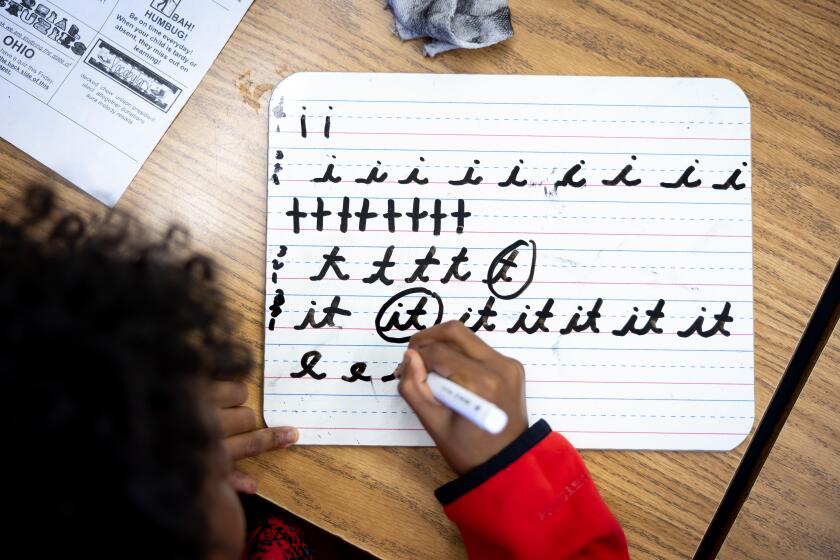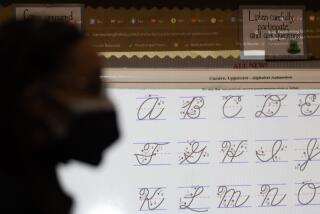The Times asked readers for samples of their cursive and to talk about their relationship with old-fashioned, longhand writing with its loops, curls and dips.
A new law will require all California students to learn cursive writing — a skill that had been mandatory for generations, but fell by the wayside in the digital age.
Many readers fairly complained that The Times’ digital prompt forced them to write cursive on a computer screen with their finger, producing examples well below their standard. But as good sports, they submitted the results anyway.
They also submitted comments — typing them — which is just as well given that if their story had been told in cursive a lot of people, especially younger ones, wouldn’t be able to read it.
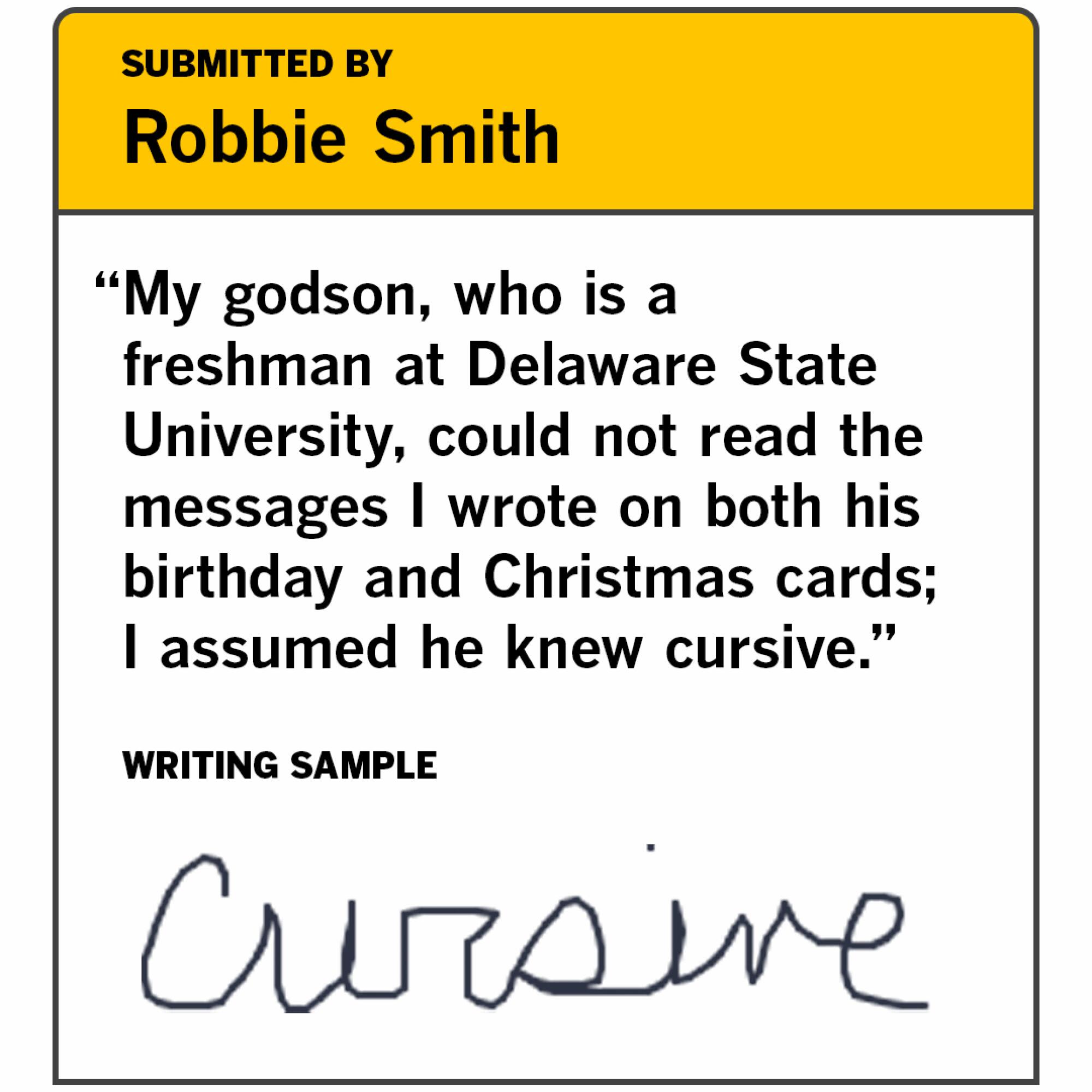
Robbie Smith said her adult godson’s mother had to read him the birthday and Christmas card messages she wrote to him in cursive. “I looked at both of them in astonishment!”
Christine Hervey-Murray, who works in Fullerton, found a way to take advantage of her students’ unfamiliarity with cursive.
“I teach first grade and I use it daily as a secret code when sending students with notes to the nurse or office, as they can’t read it,” she said.
Teaching of cursive writing returns after falling to the wayside amid revised learning standards and emphasis on keyboarding. Backers say it promotes learning.
More often, a lack of cursive skills proves an impediment.
“I do not use a full, formal cursive as I’ve done in the samples because I feel that many of my students would find it confusing,” said freshman composition instructor Jacqueline Kozak, 47, who lives in Hollywood. “I used cursive in an 18th birthday card to my nephew last year, and he could not read it.”
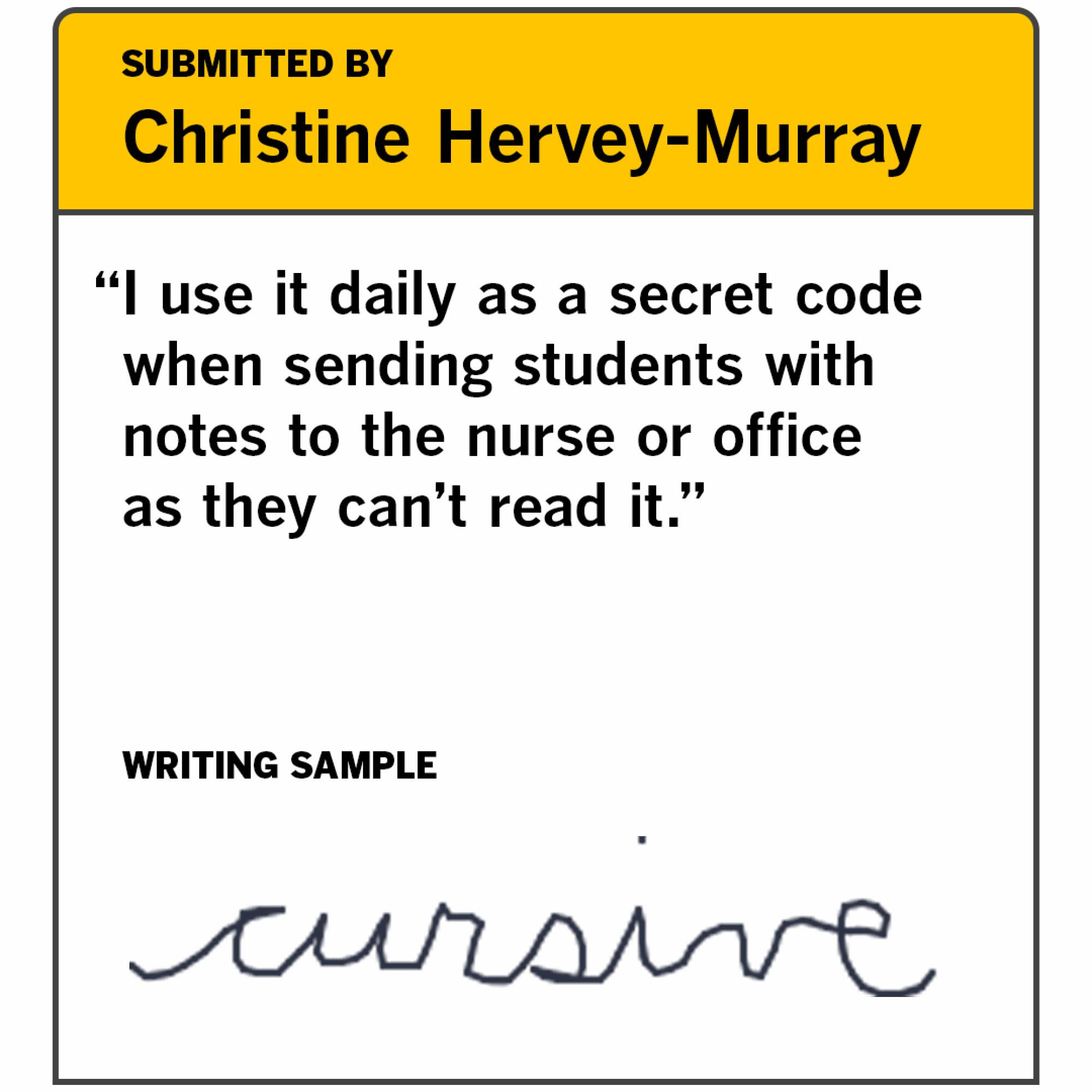
Kozak, who teaches writing and rhetoric at University of La Verne, conducted an experiment:
“I asked some students to practice taking notes by hand this past semester. While most of them grumbled that they did not like it, everyone admitted it improved their comprehension and retention of information. This is obviously anecdotal evidence, but I may include this in future courses to help students see how important it is to slow down.”
Karen Kungie-Torres, 57, who uses cursive for journaling and teaches high school English in L.A., recalled that “one time I literally wrote each student’s name for them on their own papers so they could trace it, learn it, and actually know how to ‘sign’ their own name.” She also tries to teach students how to read an old-fashioned clock with hands.
Those who value cursive tend to be older
“To me, it is a simple extra literacy that allows access to primary source documents, letters, and more,” said retired teacher Julie Drake, 66, of Hollywood. “Plus, it allows a signature that looks like something beyond an eight year old’s. When my daughter signed for her driver’s permit, it looked tragically young. Although not fluent with cursive, I helped her develop a signature for use in her young adult life.”
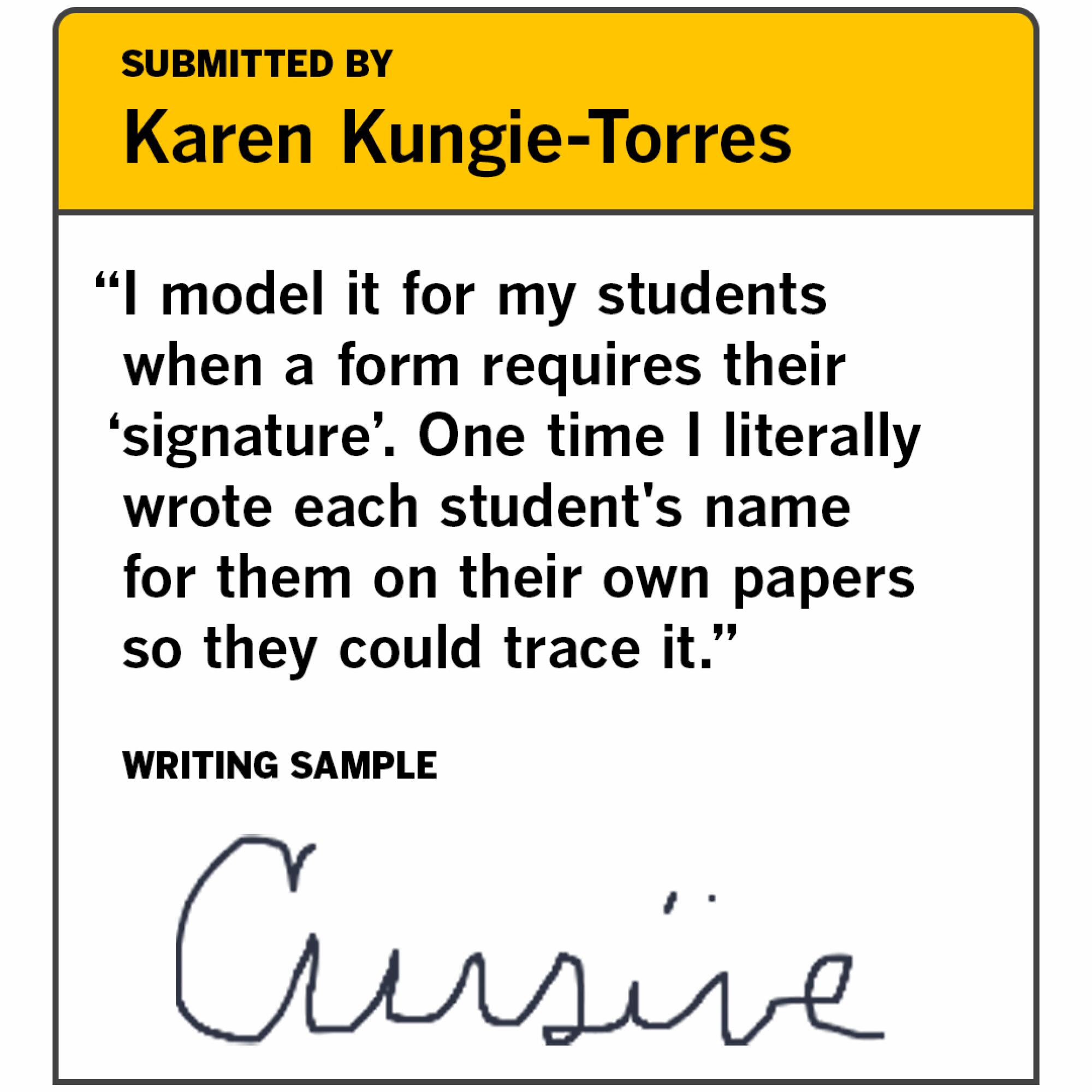
Portland, Ore., resident John Green, 76, grew up in Scottsdale, Ariz., in the early 1950s: “I can distinctly remember the penmanship instructions given in the early elementary grades — I believe we were taught the Palmer Method — virtually a lost art today. ... In the sales seminars I used to lead, I would always use cursive.”
Norma Garcia, 66, of San Francisco, called cursive faster, relaxing and more beautiful — and she has a special pen for it.
More importantly, “I have a child with special needs and cursive writing was an effective approach to helping with eye/hand coordination and addressing dysgraphia.”
John Lopez, 55, a fourth-grade teacher in Pomona, is a true believer: “Cursive handwriting helps to preserve the analog soul that no digital font can represent. Cursive writing shows warmth and that someone took the time to sit down and write rather than rush to a keyboard or keypad.”
Out of practice
Maria Jette, 65, a classical singer who lives in Minnesota, had not really used cursive in 25 years before taking a seven-week, French-immersion course at Middlebury College. She “filled a couple of notebooks with written-out exercises, something that was almost as interesting as French itself! My handwriting ... took a while to return to its norm of my early writing life, but got there by about the third week.”
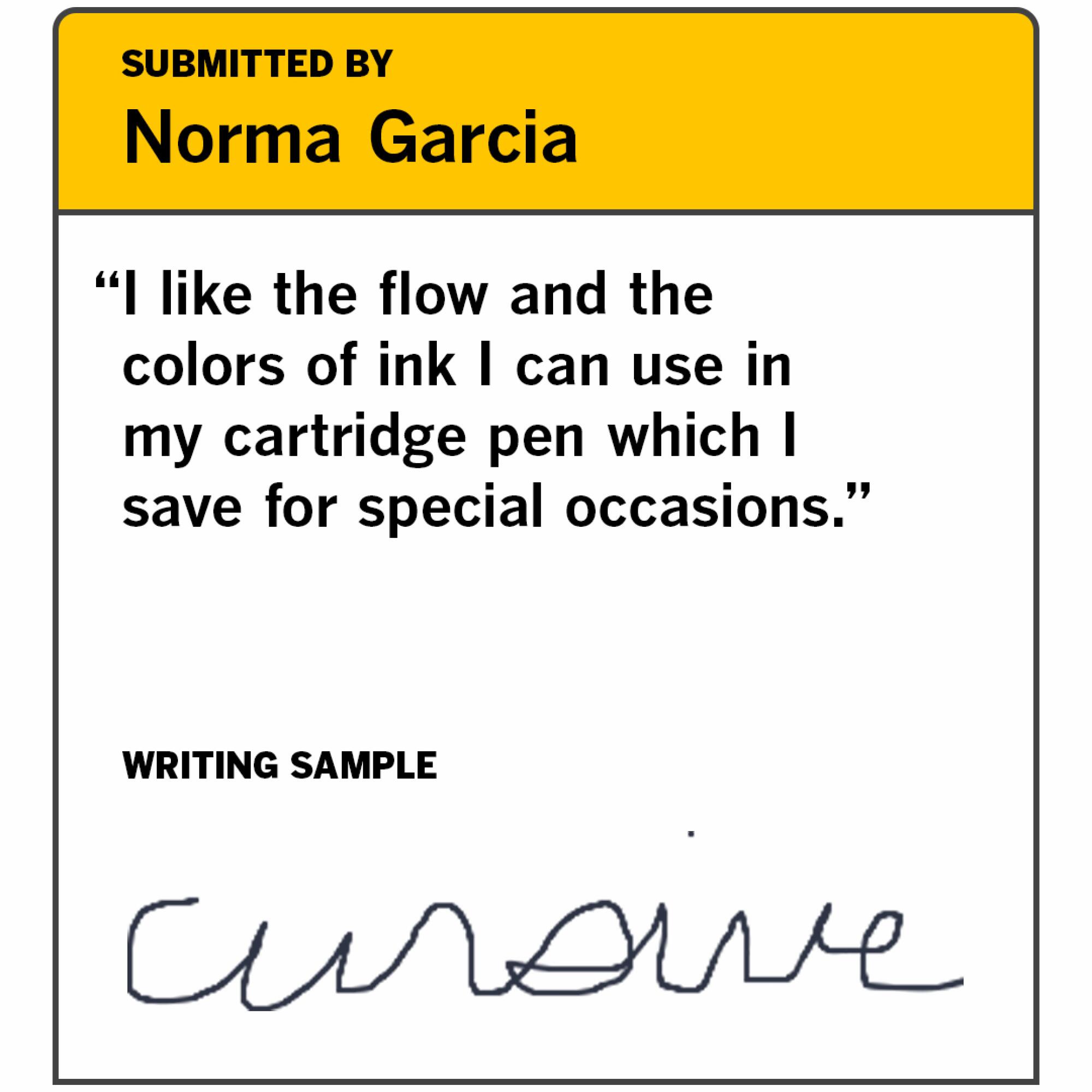
Justin Troyka’s signature “has become more of a random squiggle in recent years.”
He confessed: “For the exercise on the L.A. Times website, I had no idea how to write the uppercase ‘G’ or the uppercase ‘Z’ in cursive; I was really just guessing. I knew how to write the word ‘cursive’ in cursive, but it still took me a few tries to get it right.”
Troyka, 32, a Cal State L.A. math professor, said he used to love cursive as a child before leaving it behind.
Little use for it
A fair number said they just use cursive for things like signing checks. Miriam Eide, 25, of Oakland, never uses it.
“Never!” chimed in Brian Bodensteiner, 47, of Carlsbad. “I write software. My colleagues call us ‘typers.’” His wife, however, is a third-grade-teacher — whose lessons include cursive.
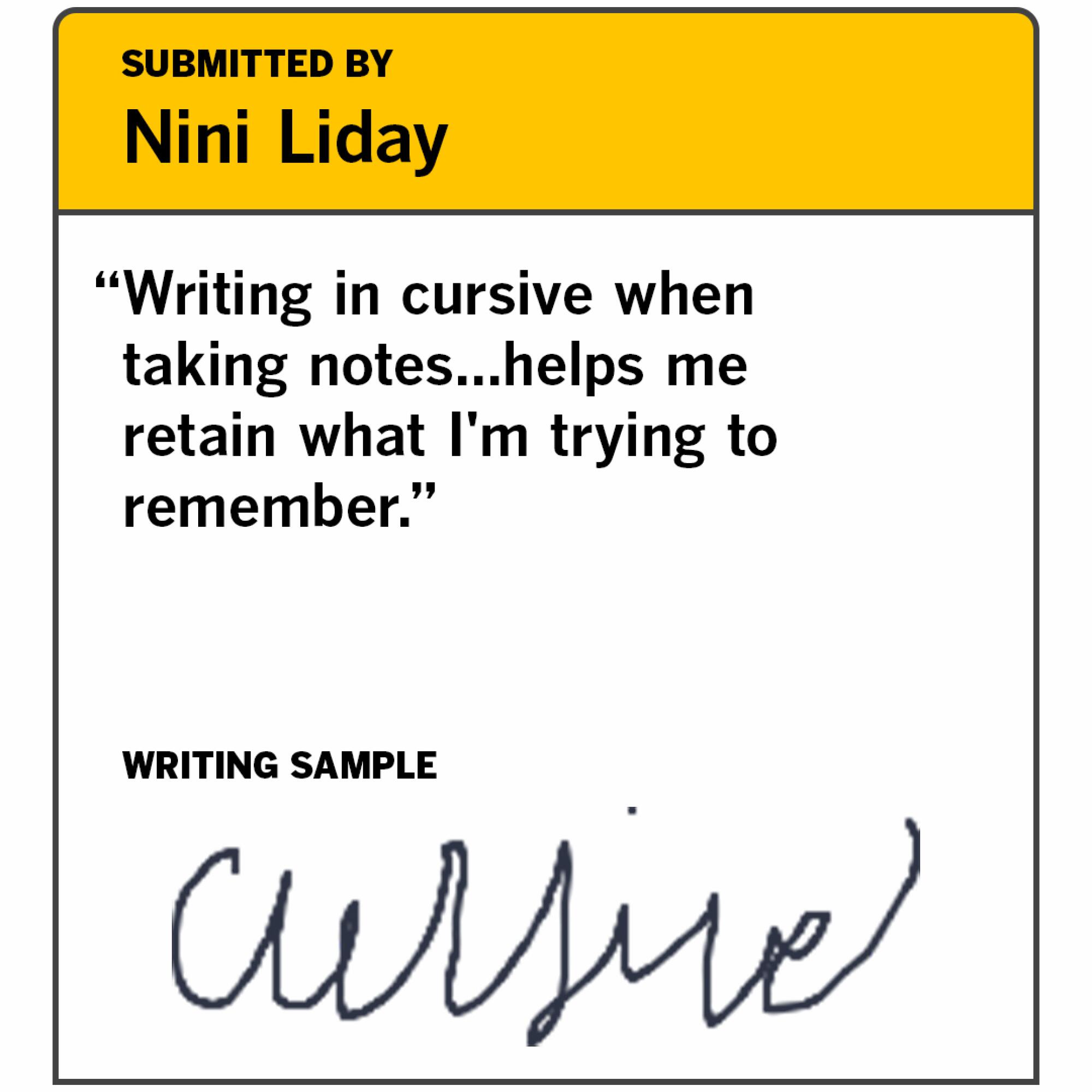
And then there’s Josh Swedelson, 29, a TV music executive who lives in Venice Beach. He uses cursive, “Literally never. Why would I? Except when I doodle my name in a meeting…”
Ouch.
But there’s more to this script.
Eide, who grew up homeschooled in Minnesota, learned cursive: “I appreciate knowing it because it makes it easier to read cursive when I do encounter it.” Her sister, an educator, advocates the use of cursive first “because it was designed for the human hand and it’s almost impossible to reverse letters.”
“It always has stuck with me that printing was designed for the printing press,” she said. “Honestly, if there was a social shift I really do think handwriting in cursive is faster and more comfortable.”
And even Swedelson admitted, in a follow-up, “I often enjoy writing names and words in cursive while I’m on a call. It helps me listen more intently. Sometimes I write parts of birthday or special-occasion cards in cursive. It feels a little more special. Writing slowly and with intention can be calming.”
Trending trendy?
Playwright and TV writer Carla Chung will use print “when it’s for others to look at but make cursive notes for myself because it’s faster.” Unfortunately, “printing is really the writers room standard.”
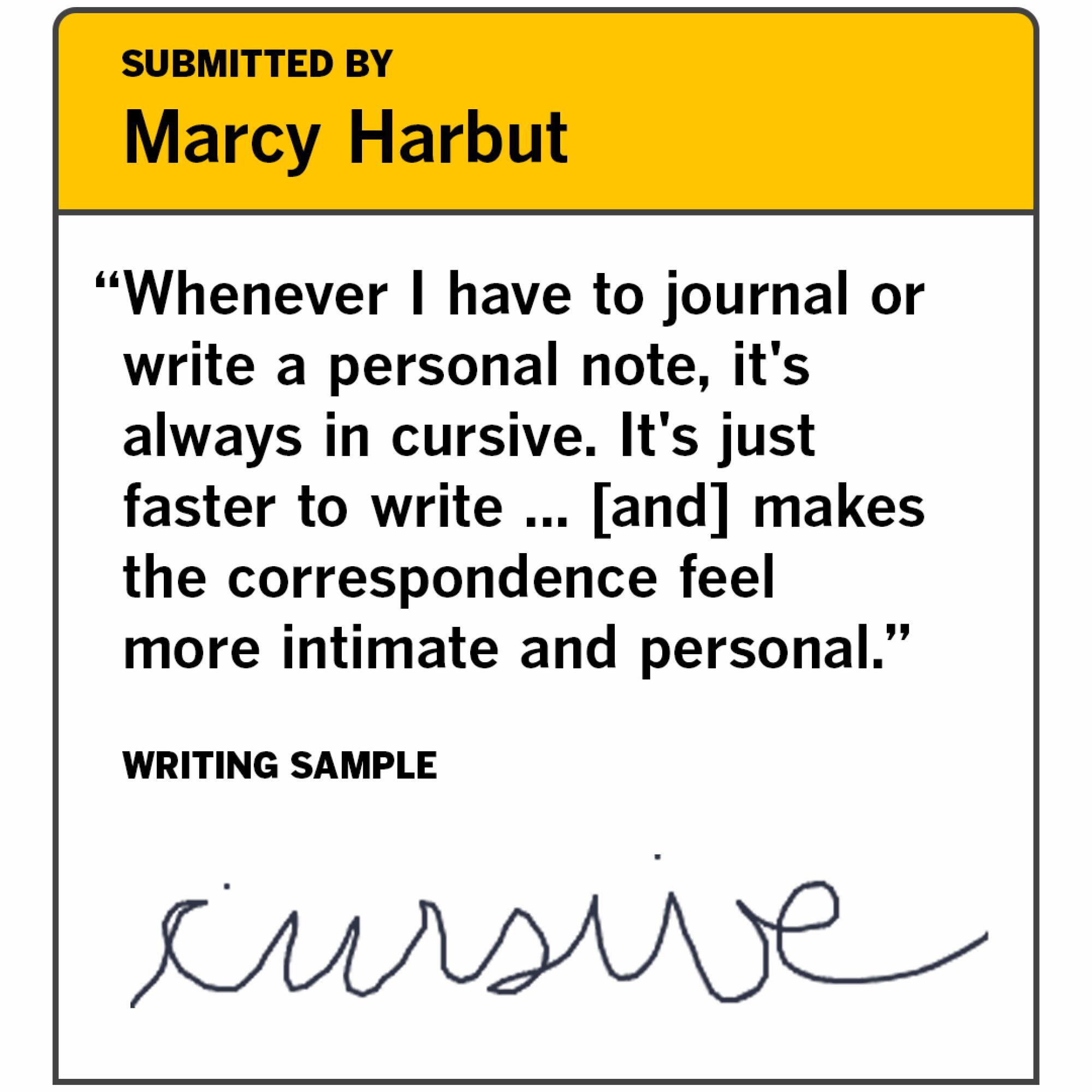
Teresa Wang, 37, of Monterey Park, recalls that her fifth-grade teacher said writing in cursive would help with note-taking in college. “I’m not sure why that stuck with me, but it did, and I’ve written in cursive by default ever since.”
Orange County paralegal Sarah Rin, 35, also is on board: “In a world where we are always typing and clicking on our devices, I think this [new law] is great.”
More to Read
Sign up for Essential California
The most important California stories and recommendations in your inbox every morning.
You may occasionally receive promotional content from the Los Angeles Times.
